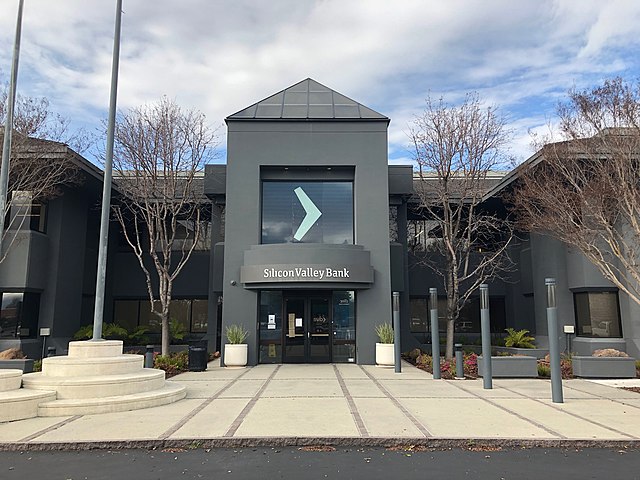Investors in Silicon Valley Bank are just as culpable as bank itself
If you invested in Silicon Valley Bank, you should have known how risky the company was from the start
COURTESY OF MINH NGUYEN / CREATIVE COMMONS
People who were banking with SVB had to understand they were banking themselves into a very different situation
April 13, 2023
Banking with Silicon Valley Bank (SVB) should have been seen as a business move, an investment in its own right. There was a level of risk assumed that was not being hidden.
The spotlight on the world of finance and banking has been burgeoning since the global pandemic. The demise of the Silicon Valley Bank wasn’t written in the stars, but it certainly isn’t surprising.
When the pandemic hit, there was panic that the global economy would entirely collapse. For the most part, disaster was avoided. Granted, the stock market crashed and in the states, a lot of small businesses struggled to stay afloat, but in the grand scheme of things, no major banks went down and the stock exchanges managed to battle back from their historic low.
However, that kind of cataclysmic event that everyone feared, occurred last month. According to CNBC, the Silicon Valley Bank was closed on March 10th, by financial regulators in what they call the “biggest bank failure since the global financial crisis.”
The 2008 global financial crisis was likely the most significant financial event since the Great Depression, so not particularly something that you would want to be associated with.
One of the main ways a bank makes money outside of securities is by investing the money that is supplied to them into government bonds.
Barring a global economic collapse, banks such as Chase or Bank of America will not suffer an event like this; SVB’s failure was primarily self-inflicted.
Contrary to popular belief, banks do not need to have the same or more amount of money as has been deposited in their bank.
What often will happen, in moments of crisis, is that there will be a “run on the bank” and everyone will want to pull their money out of the bank. In this situation, the bank will simply not have enough money to give back to depositors.
This is exactly what happened in the case of SVB, but in a much more severe fashion. According to the Washington Post, what SVB did was take the money that was invested in it and reinvested it in high-risk agency bonds.
Traditionally, banks only invest in very low-risk bonds, but what set SVB apart from other banks is that their business model was centered around appealing to tech-startup companies.
They wanted to build their own bridge and be innovative, just like everyone else in Silicon Valley.
While they still had a lot of money invested in traditional low-risk bonds, their margin for error was very slim due to the other investments.
When the announcement was made that they were selling stock to overcome their deficit in assets/liabilities, the run on the bank began.
A “run on a bank” is the classic prisoner’s dilemma. If everyone were to just stay put, everyone would be safe. When everyone starts pulling their money, everyone must get out to avoid major losses. It is an extremely volatile situation.
There are a lot of people who went into doomsday mode in the wake of this event. While bank failure is certainly always a risk at some level, SVB was never the same as some of the stalwarts of American banking.
Silicon Valley Bank was built for a different kind of depositor than the common person.
When most people are looking for who they want to bank with, they are most likely looking for a safe and trustworthy place to keep their money.
Making money through banking is really a smart way to improve your financial situation that more Americans should learn, but the primary purpose of a bank to many Americans is to protect their portfolio.
People who were banking with SVB had to understand they were banking themselves into a very different situation. A new bank (in comparison to traditional banks) with a youthful and exciting investment strategy screams risk.
I am not saying that anyone could have predicted this event, but it is certainly not the most surprising thing to occur.











